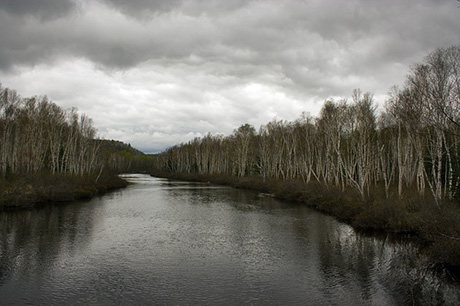
But, I look forward to the overcast skies because although they produce some gloomy feelings, they also create some very unique lighting conditions that bring out some of the best colors found in nature.
What’s so special about overcast lighting conditions?
Overcast skies are special because of the soft and balanced light they produce. The clouds act as a natural diffuser, so the more clouds you have in the sky, the more balanced the light will be. This balanced light will eliminate virtually all shadows and reflections.
So, what are these conditions good for? Well, two great examples are wildflowers and waterfalls.
Example #1 – Wildflowers
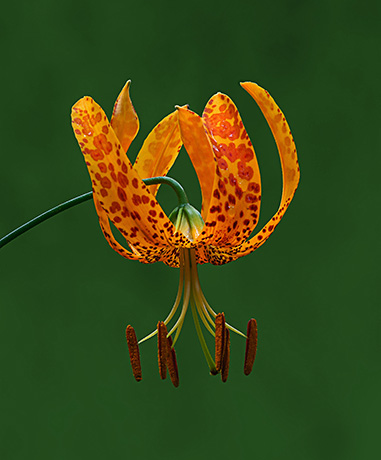
On a bright sunny day, the harsh rays of the sun will blow out the highlights of wildflowers and create some ugly dark shadows. The natural diffuser (clouds) helps balance the light to eliminate these shadows and cast a soft light on the flower (preventing those highlights from being blown).
Example #2 – Waterfalls/streams
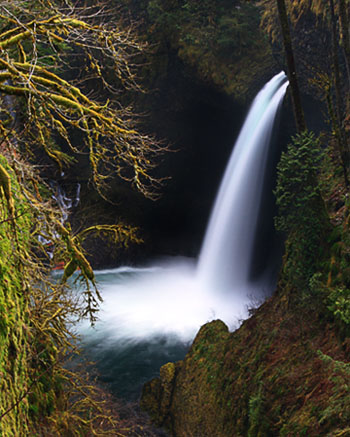
Another great benefit of photographing waterfalls/streams on overcast days is the need for longer shutter speeds. Since cloudy days are significantly darker than sunny days, you’ll need a longer shutter to capture the scene. These longer shutters are great for achieving that “silky” water look like in the photo above.
Another option: Capture the gloomy mood
If wildflowers and waterfalls aren’t your thing, then perhaps you can just capture the gloom of overcast days. Maybe you know of a lone tree in a meadow somewhere, that looks especially lonely on a cloudy or overcast day.
There’s no rule that says all your photos have to be happy, so don’t be afraid to capture the gloom 🙂
For example, here’s a scene I photographed on a gloomy overcast day:
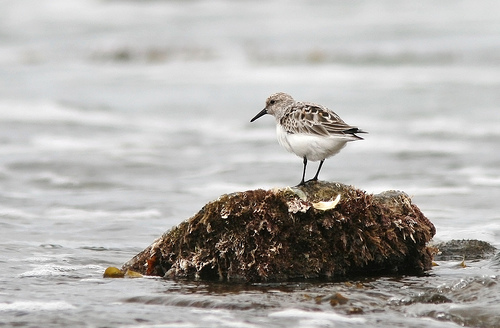
What did I miss?
Is there something else you’ve noticed that looks especially wonderful on overcast days? Please share it with us by leaving a comment below!
If you enjoyed this article, and would like to read more, please signup for our free email newsletter.
 About the Author: Steve Berardi is a naturalist, photographer, computer scientist, and founder of PhotoNaturalist. You can usually find him hiking in the San Gabriel Mountains or the Mojave Desert, both located in the beautiful state of California.
About the Author: Steve Berardi is a naturalist, photographer, computer scientist, and founder of PhotoNaturalist. You can usually find him hiking in the San Gabriel Mountains or the Mojave Desert, both located in the beautiful state of California.
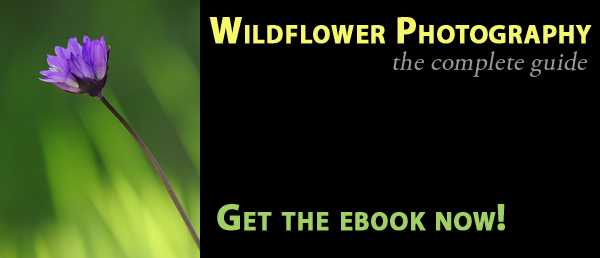
I think you miss ladscapes with ruins.
http://farm3.static.flickr.com/2468/3600531141_0a619c7846_b.jpg
Another interesting post. Thanks. The natural soft-box effect can be useful in almost any high contrast situation where you don’t want to blow highlights. Most people want sunny weather for weddings – but with the bride in white and the groom in black overcast days make for easier exposures.
Overcast days can also be great for archtitecture and abstracts. The trick is to avoid getting any sky in the photo as it will tend to go white and featureless.
@Ian – good point about weddings, architecture and abstracts.. I don’t really photograph people, but one of the other great things about overcast light is that people don’t squint in it, like they do when it’s sunny (an annoying thing in portraits!). Yeah, you can have them stand in the shade, but that of course limits your background options.
@Katerina – You’re correct: overcast skies create smooth and balanced/diffused light. The clouds are the best possible light diffuser you can get.
Although I don’t really photograph portraits, I have heard repeatedly that overcast light is great for portraits.. It’s similar to shooting in the shade.
dramatic coastal scenes, great to have some low clouds.
I’m still looking for clear RAW tutorials.
Yep – Over the years I have taken hundreds of shots of a garden by the sea, in the village I was born. Last Sunday was overcast; just clouds and no sky. I got fantastic shots (by my beginner standards); I could’nt believe it. And they were all on auto with ADL on.
Good article Steve ! I was photographing a water fall the other day, and it was sunny ! I wanted the silky look to the water, but slowing down the shutter let in too much light ! I’ll have to try again on an overcast day ! Could I use any filters to achieve reduced light so I can slow the shutter right down ?
Use your camera on manual settings for aperture/shutter speed combination. Set the ISO on the lowest value possible. Use Neutral Density Filters and you will cut down the light so that you can use the slower shutter speeds/smaller aperture combinations that give you the smooth, flowing look of the water. Be sure you are on a tripod to minimize camera shake and use the mirror up mode if available and/or self timer. Sometimes a circular polarizer will cut down the light a bit but it may not help in bright sunlight to cut down the light enough.
In Bengal, during monsoon, it will b cloudy. I think now I can explore during that season and get some wonderful pics… Thanks once again for your article…
Autumn colors can also be more striking with an overcast sky as background. This surprised me since blue and orange are complementary colors.
Your examples are appropriate .This lighting is good for portrait also.Thanks.
In the Northwest we call this month Juneuary, though living here we’re quite used to photographing on overcast days.
Another subject that almost necessitates an overcast sky is forests. It is impossible to properly expose when the sun lights half the trees and the others are in the shade. Backlighting leaves in a deciduous forest is very dramatic, but to coin an old phrase ‘you can’t shoot the forest for the trees’.
Hi Steve, Yes, I love those overcast days. Probably my favorite for photgraphy. They really bring out the colors of a forest as well and cut down on the glare and contrast that makes photographing forests and leaves so difficult. Was out yesterday photograhing waterfalls with the many overcast days we get in New England.
I always enjoy your posts. I look forward to overcast days especially on weekends when I have the time to photograph. What I really need help on is what to photograph on bright sunny days at mid day when you don’t have the choice of being at a great location at dawn or dusk.
Superb photos and your advice.
Thanks.
G. Prem
Great Article! i enjoyed your post
Great point. We also get June gloom in northern CA. This is my favorite light to shoot product photos of my glass jewelry. No reflection off the glass and the color does not get washed out. Thank you for your tips.
Overcast days are also my favorite time for photographing wildlife.